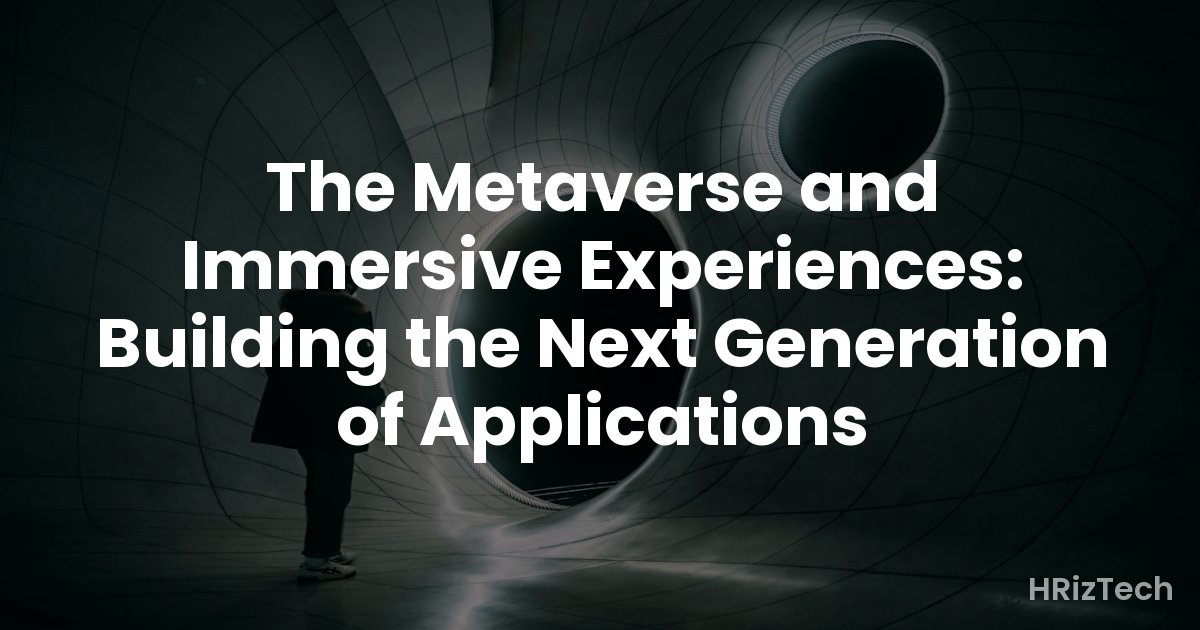The Metaverse and Immersive Experiences: Building the Next Generation of Applications

The Metaverse and Immersive Experiences: Building the Next Generation of Applications
- The metaverse offers unprecedented opportunities for developers to create engaging and immersive applications.
- Understanding user experience (UX) and user interface (UI) design principles is crucial for successful metaverse application development.
- Key technologies like VR/AR, blockchain, and AI are essential components of metaverse application development.
- Challenges include interoperability, scalability, and the ethical considerations of immersive technologies.
- The future of metaverse applications lies in their ability to seamlessly integrate into our daily lives.
What is the Metaverse, and Why Should Developers Care?
The metaverse isn't a single platform; it's more of a concept – a persistent, shared, 3D virtual world where users can interact with each other, digital objects, and experiences. Think of it as the next evolution of the internet, moving from 2D screens to immersive 3D environments. For developers, this represents a massive, untapped market brimming with opportunities to create innovative applications that transcend the limitations of traditional software. Instead of building apps for screens, we're building experiences within spaces.
Building Blocks of Metaverse Applications
Virtual and Augmented Reality (VR/AR)
VR and AR are the foundational technologies of the metaverse, providing the immersive experiences that define it. VR creates entirely simulated environments, while AR overlays digital information onto the real world. Developers need to master these technologies to create realistic and engaging interactions within the metaverse. This involves understanding spatial audio, realistic physics engines, and intuitive interaction methods beyond traditional mouse and keyboard input.
Blockchain Technology
Blockchain's decentralized and secure nature is crucial for managing digital assets and ownership within the metaverse. Non-fungible tokens (NFTs) allow users to own unique digital items, from virtual land to in-game assets. Smart contracts automate transactions and interactions, ensuring transparency and trust within the metaverse ecosystem. Developers must understand how to integrate blockchain technology seamlessly into their applications to manage digital ownership and transactions.
Artificial Intelligence (AI)
AI plays a vital role in creating realistic and dynamic metaverse experiences. AI-powered NPCs (non-player characters) can provide engaging interactions, while AI algorithms can personalize user experiences and optimize resource allocation. Machine learning can be used to analyze user behavior and predict trends, allowing developers to continuously improve their applications and cater to the evolving needs of users. Integrating AI responsibly and ethically is crucial to avoid potential biases and negative impacts.
Designing for Immersive Experiences
Building for the metaverse isn't just about coding; it's about designing engaging and intuitive user experiences. Traditional UX/UI principles still apply, but the context is vastly different. Developers need to consider spatial awareness, intuitive navigation, and realistic interactions. The sense of presence, or the feeling of being truly immersed in the virtual world, is paramount. This requires careful consideration of factors like lighting, sound design, and the overall visual aesthetic.
Challenges and Considerations
Interoperability
One of the biggest challenges facing the metaverse is interoperability – the ability for users and assets to seamlessly move between different metaverse platforms. Currently, many metaverse platforms are siloed, limiting the potential for widespread adoption. Developers need to advocate for open standards and protocols to ensure that their applications can integrate with other platforms.
Scalability
The metaverse requires significant computing power and bandwidth to support large numbers of concurrent users. Scaling metaverse applications to accommodate millions of users while maintaining a smooth and responsive experience is a significant technical challenge. Developers need to consider efficient algorithms, distributed computing, and cloud-based infrastructure to address scalability issues.
Ethical Considerations
The metaverse raises several ethical considerations, including privacy, safety, and accessibility. Developers need to be mindful of data privacy and security, implementing measures to protect user information and prevent misuse. They also need to consider the potential for harassment and discrimination within the metaverse and design their applications to minimize these risks. Accessibility is crucial to ensure the metaverse is inclusive for users with disabilities.
The Future of Metaverse Applications
The future of metaverse applications is bright, with potential applications across various industries. From education and training to healthcare and entertainment, the metaverse offers opportunities to create innovative and engaging experiences that were previously unimaginable. As technology continues to evolve, we can expect even more immersive and realistic experiences, blurring the lines between the physical and digital worlds. The key to success will be creating applications that seamlessly integrate into our daily lives, making them both useful and enjoyable.
Comments
No comments yet. Be the first to comment!